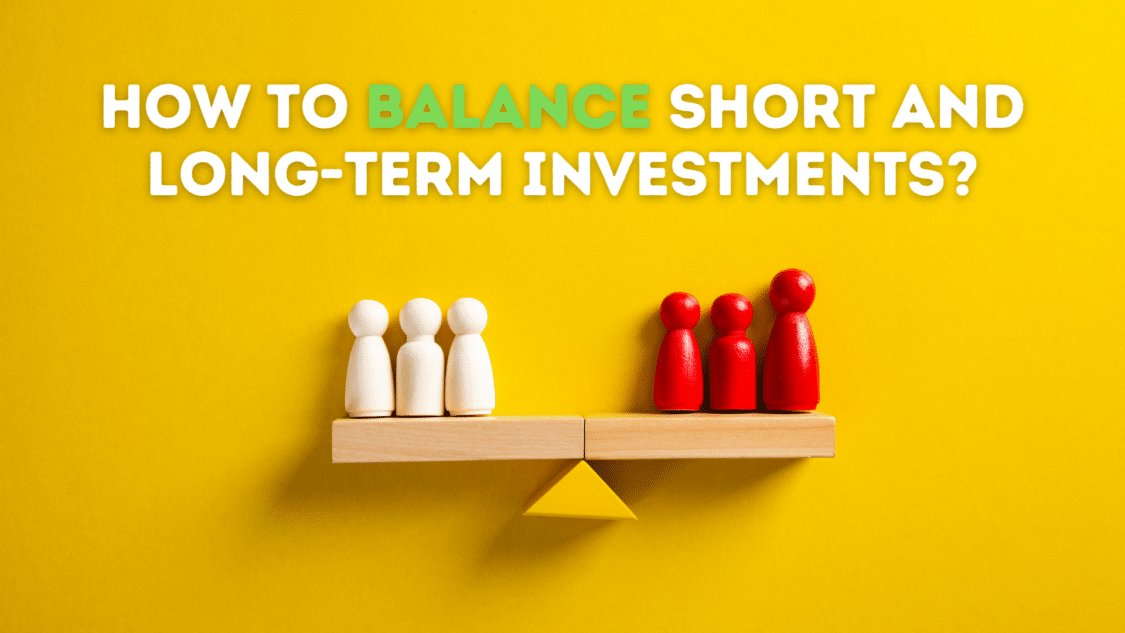The difference between short term and long term Investments is many. They each have their pros and cons. Short-term investments are known to be a safer option as opposed to long-term investments, which are known to be a riskier option.

Short-term investments involve less risk. There is time to recover from dips in the market in long-term investments. Your money has time to grow, which can be a bonus with the market’s volatility. On the other hand, there is no way to predict the market and its value in two years in long-term investments. An investor should have a goal in mind; this way, he can choose whether to go the route of short-term or long-term investments.
The differences of short term and long term:
As its name indicates, investors usually want access to their money sooner when investing in short-term investments. In this case, it is best to opt for less risky investments. On the other hand, when investing in the long term, your money has time to recover from losses. This can often be an advantage because you can experience growth in the stock market. In this case, you can choose riskier options because there will be time to grow.
Long-term and short-term investments have different time horizons. As their names give off, short-term investments give a return on investments within a short time. Long-term investments, on the contrary, make a return at some point in the future.
The two are meant for different investment goals. Regarding risks, short-term investors should be prepared to lose some money. Long-term investors should put aside the money they’re looking to save for their future long-term goals.

Short Term
- It offers more liquidity, and access to money is quicker and easier.
- You experience less volatility.
- It’s possible to manage independently without the help of a professional.
- Flexible withdrawal options
Long Term
- Less liquidity can lead to difficulty with withdrawals.
- More volatility
- The guidance of a professional is usually required.
- Limits penalty-free withdrawal
Short Term Investments:
Short-term investments usually have a time frame of three years or less. Your ideal investments should protect you from losses in this short time. That usually implies a trade-off: your money will be safer, but you won’t see as much gain as if you invested in a riskier investment.
Anything that includes high liquidity is an excellent example of a short investment. In simpler terms, these are investments that can be cashed easily and are therefore viewed as equivalent to cash.
Some examples of these investments are traditional or high-yield savings accounts and bonds, stocks, or mutual funds. Short-term investments can be sold much faster than land or vehicles that are non-liquid assets. Your potential gains on a short-term investment may only limit losses due to inflation, especially in a low-interest-rate environment.
Long-Term Investments:
Long-term investments are for people looking to make higher-risk choices. However, this includes higher risk. It also can bring great rewards in the long run. This is because the long-term investor’s money has time to recover and bounce back to where it originally was after the losses it experienced. These investments usually have a time span of 10 years or more until they’re sold. Almost all long-term investments are non-liquid.
Non-liquid assets take longer to liquidate and may lose value when sold. Their prices are highly volatile, and they fluctuate depending on the situation of the market. Some examples would be stocks, mutual funds, or longer maturity bonds. If you’re looking for a group of investments, you have stocks and bonds with a fund manager. Real Estate Investment Trusts are also an option. This allows investors to put their money toward real estate projects that could potentially provide them returns.
Regularly contributing to a retirement or brokerage account, regardless of the present status of the market, can protect the average consumer from some of the ups and downs of long-term investing. This is known as dollar-cost averaging, and it means you’ll be able to buy more stocks when they’re less expensive and fewer when they’re more expensive. This simply entails making regular contributions—perhaps monthly or every time you receive a paycheck.
How to balance short and long-term investments?

Now that we are all educated about short- and long-term investments, we see they have significant differences. Each investment type works for a different goal. They seem to be opposites; therefore, they can be together in a portfolio.
So, aim to mix both types of investments, but only put a part of your money into short-term investments that you’re ready to lose. With this in mind, you should put the majority of your money into long-term investments for a more extended period of time.
For more news updates, visit our homepage now and see our latest news article. Want to learn more about trading? Visit our education page now and learn for FREE!
Cryptocurrencies are Sliding(Opens in a new browser tab)

